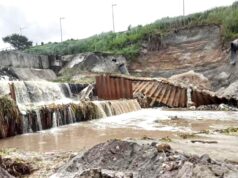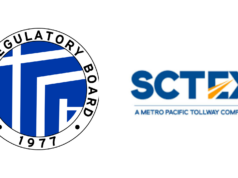ANGELES CITY– Of 1,491 cities and towns in the Philippines, only 758 have potable running water system, while over 600 towns remain dependent on “crude and unsafe” shallow wells, hand pump water or even rivers or lakes.
Former Trade and Industry Undersecretary and Board of Investments managing head Cristino Panlilio, who is now president of the Balibago Waterworks System, Inc. (BWSI) in this city, also noted that of the 758 water systems in place, 35 percent or 271 “are considered operating at a loss and may not be operational and sustainable in the near future.”
Briefing members ofthe Capampangans in Media, Inc. (CAMI), Panlilio cited three “oft-quoted” reasons explaining the state of running water systems, usually referred to as Level 3 water systems. “First is the fragmented regulation and management within government agencies.
While over 30 Philippine government agencies and departments overseeing the water-related sectors of the country, overlaps and conflicts in the directions and priorities create inefficiencies in the implementation of water programs,” he noted.
Panlilio also noted “lack of expertise of implementing bodies,” as he noted that the Local Water Utility Administration (LWUA), which is tasked as the primary government institution to oversee Level 3 water systems, has been “embroiled in internal conflicts that have negated its vital mission and objectives.”
“Severely affecting the implementation and sustenance of Level 3 water systems are the management integrity issues afflicting established Level 3 water systems in the form of local water districts, municipality- owned water service provider or cooperatives,” he said.
Panlilio cited the third reason as “the low-tariff recovery level.” “Tariff levels are not sufficient to sustain operation and expand coverage. The tariff issue is a sensitive one in the sense that if service is below standards because of inefficient management, then it is difficult and unacceptable to raise tariff level at an investment- recovery level,” he said.
Panlilio said that these problems could be solved under what he proposed as a “Water Public Partnership Program” (WPPP) entrusting “on an integrated or inclusive basis the grants, donations largesse, government funding or private equity investments or both to a proven, experienced and capable and trustworthy Level 3 water management entity.”
Panlilio’s family took over the BWSI here in 1997 and has since expanded to operate Level 3 water systems in 46 other areas in the country. BSWI plans to cover more cities and towns which have no running water systems.
The criteria for prioritizing target areas, he said, are based on income classification of the area, a population of no less than 5,000, proximity to rural and urban growth centers, existing water supply systems, electricity cost rates per kilowatt hour, type of water sources, availability of resources and assistance in the community and acceptance of the municipal leadership, Panililio also said.



